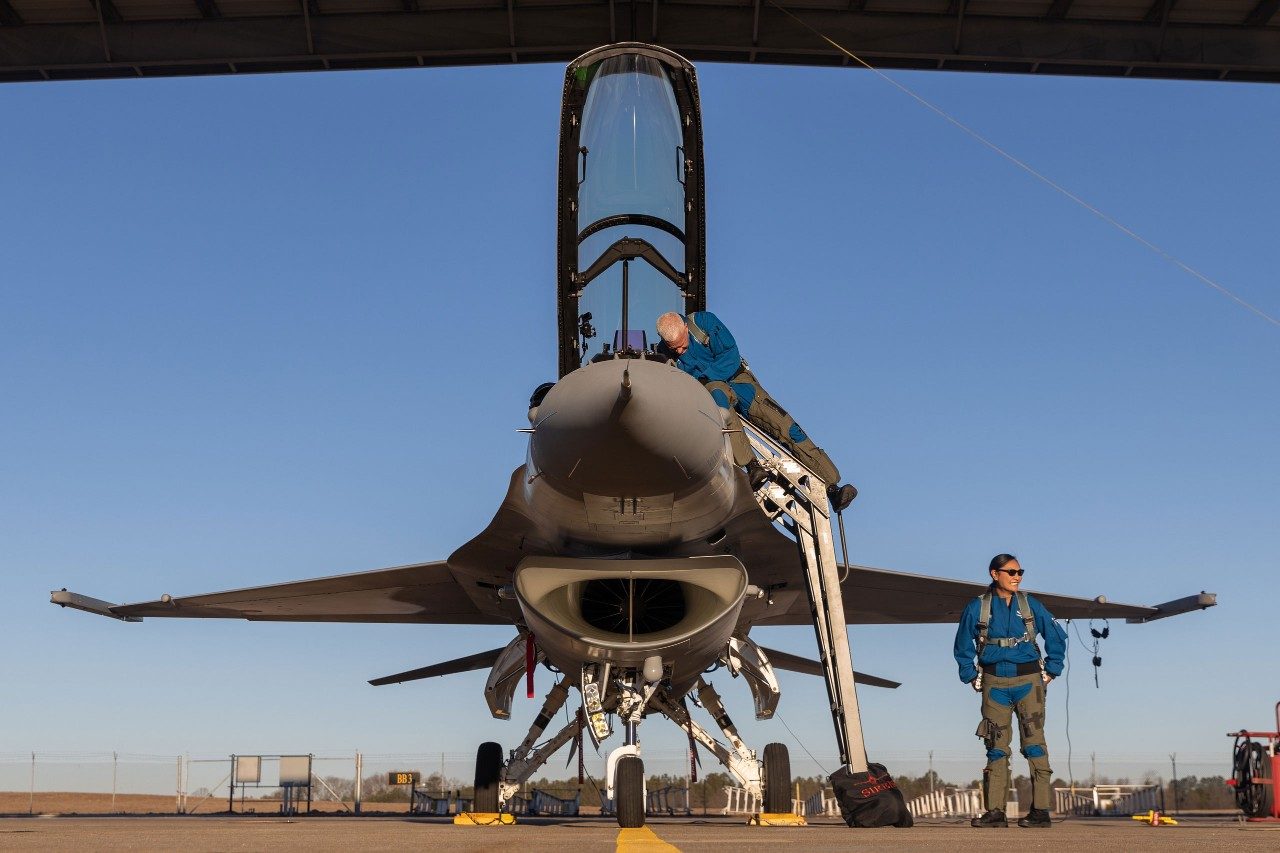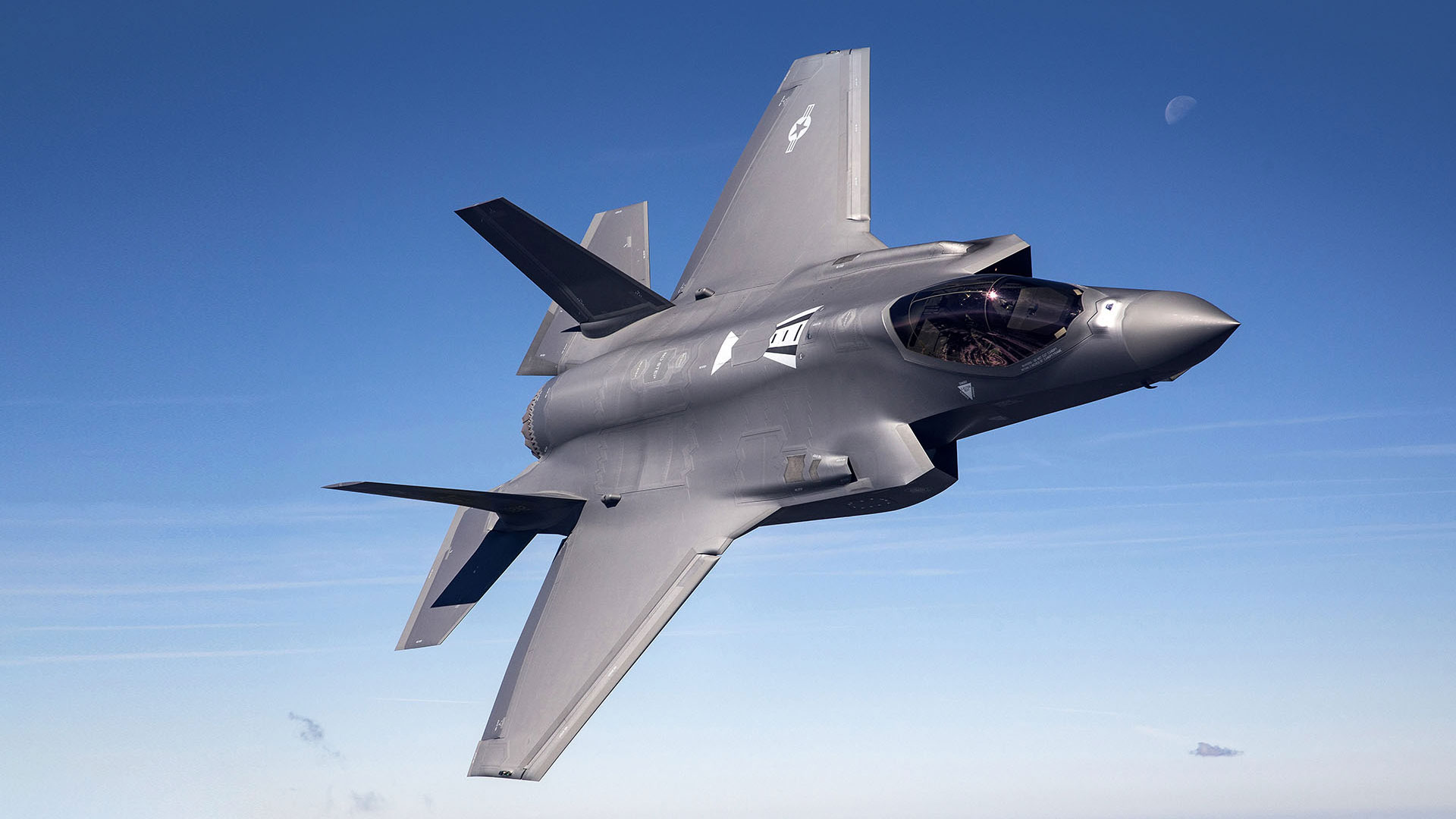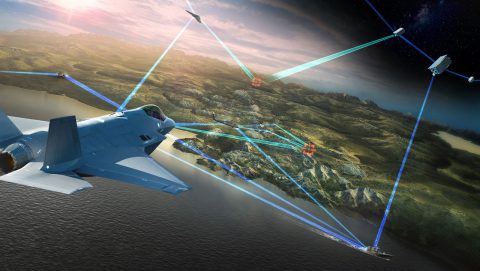Monessa ‘Siren’ Balzhiser: “I Want the Best for the Philippines, and the F-16 is the Key”
Lockheed Martin is proud of its nearly 60-year partnership with the Philippines, and today, as the Philippines looks to transform its fighter fleet, Lockheed Martin is confident the F-16 Block 70 will deliver the advanced 21st Century Security capabilities and performance needed to address the nation’s most pressing defense requirements.
Monessa “Siren” Balzhiser, Lockheed Martin pilot, discusses the F-16 Block 70 fighter aircraft, and the amplifying effect the F-16 will have on the U.S.-Philippine relationship.

Q. What can you tell us about your background and your F-16 flight experience?
Siren: I graduated from the U.S. Air Force Academy and spent 12 years as an officer and F-16 instructor pilot in the U.S. Air Force. I have flown 1,600 hours in the F-16 in the United States, European and Pacific theaters as well as 320 hours in combat. I joined Lockheed Martin six years ago as a F-16 engineer and was given the opportunity to fly by our Chief Test Pilot. Who would ever say no to an opportunity like that?
Q. What excites you most about flying the F-16?
Siren: There’s something to be said about strapping into an aircraft with 50k pounds of thrust and an array of weapons, but I believe the multiple missions and the impact the F-16 makes is what excites me the most about flying this jet.
One of my combat missions that stands out to me the most was after doing an intercept with a suspicious aircraft, my flight was immediately called in to help some ground troops who were clearly under distress after having a run in with some pretty bad guys. Afterwards, they came to our base to reload on food and weapons, and they had the opportunity to visit our squadron during their time there. Their simple words of, “Thank you for saving my life” meant so much.
And that is why I do it. That is why I continue to try and make the F-16 the best aircraft it can be…because of moments like those.
Q. As an American of Philippine descent, what does it mean to you to talking about the F-16 as a solution for the Multirole Fighter program in the Philippines?
Siren: Growing up, Filipinos are taught from day one the importance of family … supporting your family, taking care of your family, doing what’s best for your family. Obviously, my Filipino parents instilled that foundation in me. But when I left the house to go to the Air Force Academy, I joined a new family … a military family. I was ready to serve and do my duty, but what also came with it was a “family-like” group in the F-16 community.
I know how capable the F-16 Block 70 is myself, and it means a lot that the Philippines would be getting an extremely capable aircraft. But beyond capabilities, the Philippines would also become part of the F-16 family and the vast interoperability assets in this region, where more than 500 F-16s are operating every day.
To be able to talk about the F-16 in the Philippines as the solution to the Multirole Fighter program is incredible, and builds on the “family roots” that have been instilled in me. I want the best for the Philippines and I think the F-16 is the key.
Q. You were the first ever to fly the Block 70. What was that like?
Siren: It is probably one of the highlights of my career thus far. I had the opportunity to lead the team that stood up the Flight Operations portion of the production line in Greenville, South Carolina. We spent 2.5 years ensuring everything was ready for that one moment … that first flight. I got to see the jet go from a piece of metal to a fully built aircraft. Watching it achieve each milestone along the way, from the first time the fuselages mated, to putting power onto the jet, to eventually flying it, was incredible.
Seeing everyone lined up on the taxiway to see us take off was a pretty emotional event for everyone. Inside the cockpit, the other pilot and myself were focused but also excited. And it performed beautifully.
Q. You’ve flown multiple blocks of the F-16 over time, in the Air Force and at Lockheed Martin. How is the Block 70 different than past experiences?
Siren: Being a part of the evolution of the F-16 and seeing how much more advanced the F-16 becomes has not only made me a better pilot, but gives me confidence that this jet, which has already proven itself, will be around for much longer.
With the Block 70, an F-16 pilot is now able to see things much farther because of the upgraded radar. We are able to simultaneously do air-to-air and air-to-ground missions, which is not something previous F-16s allowed. The Block 70s have larger displays, more weapons, and Auto GCAS, which takes over if a pilot becomes incapacitated – and has already saved 13 lives.
This jet just keeps getting better. As a pilot, that means I have a more lethal and survivable aircraft to ensure I come home safe.
Q. The F-16 is a single-engine aircraft. As a pilot, is that a limiting factor when compared to a dual-engine aircraft?
Siren: The conversation of a single engine vs. a dual engine aircraft is always a hot topic.
From a cost standpoint, if you look at the direct operating cost plus everything else that goes into flying the airplane, it's significantly more expensive for a twin engine due to more maintenance required and of course the fuel costs. Single engine aircraft come out ahead on from a cost perspective.
From a safety standpoint, it used to be that it was safety that drove a requirement for two engines. But the reliability of the today’s single engines are high. With today’s engines, you're unlikely to have an engine problem that causes an issue in the airplane. So that concern comes off the table.
From a capability perspective, it all boils down to the configuration of the aircraft. The F-16 has the ability to load up air to surface weapons and be able to complete that mission. That's scalable to what the Philippines Air Force desires. A single engine aircraft truly allows the pilot to tailor the configuration and the mission set.
Q. What is your favorite thing about the Philippines?
Siren: There are so many things! The food (minus balut) and my favorite drink-mango juice, the welcoming and friendly people, and seeing family when I can. I love being in the Philippines any time I get the chance.
Q. Now for the most important question: how did you get your call sign?
Siren: Ah yes…the question I always get asked. In order for a fighter pilot to get a callsign, he or she must do something pretty crazy or dumb in front of the other fighter pilots when they are younger in their careers.
What I can say is this … I had a tendency to set off fire sirens wherever I went as a young officer in the U.S. Air Force. And during my time at my first operational F-16 base, the fire sirens blasted and I emptied out a building of about 1,500 people in the middle of a blizzard by cooking popcorn.
Luckily, I have kept my call sign for 18 years now.




